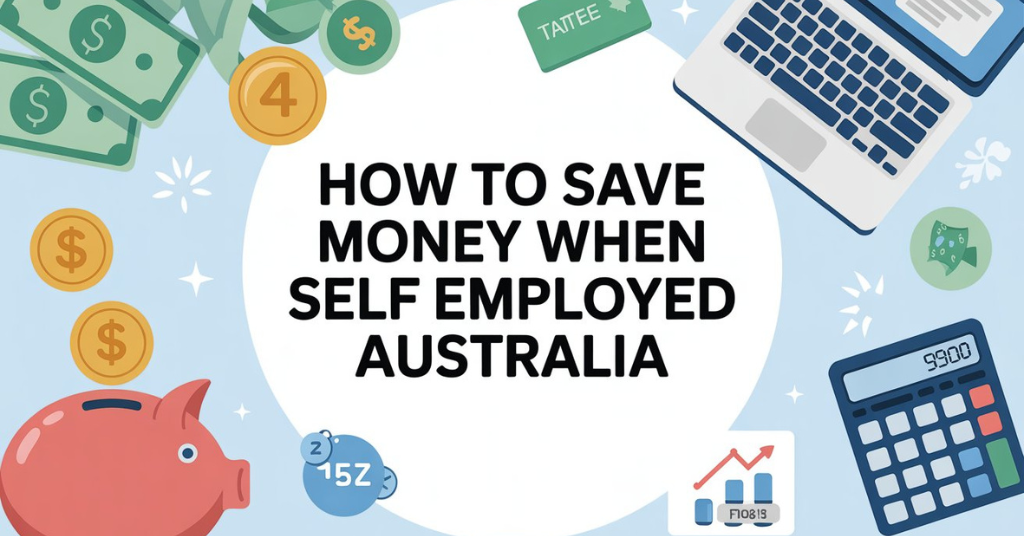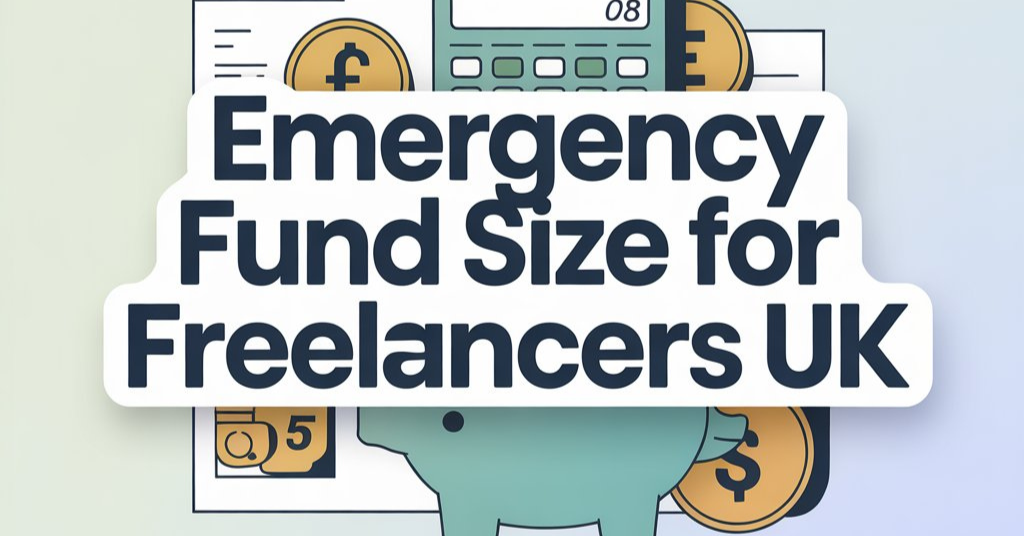Being self-employed in Australia can be exciting and rewarding. You’re your own boss, set your schedule, and choose the work you love. But it also means managing your own money, taxes, and superannuation without the support of an employer.
In this detailed guide, we’ll explore how to save money when self employed Australia with simple examples, step-by-step tips, and easy calculations to help you plan smarter and grow your savings.
15 Ways: How to Save Money When Self Employed Australia
🌟 1. Understand Your Income Flow
When you’re self-employed, your income may change from month to month. One month you could earn AUD 12,000, and the next month only AUD 7,000. That’s why you must first understand your average monthly income.
💡 Example
If you earned AUD 120,000 in the past 12 months:
120,000 ÷ 12 = AUD 10,000 average per month.
However, it’s safer to assume your income might drop sometimes. So, you can plan using AUD 8,000 per month to stay on the safe side.
💰 2. Track Your Expenses
You can’t save money if you don’t know where it’s going. List down your fixed and variable expenses.
| Type | Example | Monthly Cost (AUD) |
| Fixed | Rent, Insurance, Internet | 1,500 |
| Variable | Fuel, Supplies, Travel | 1,000 |
| Personal | Groceries, Utilities, Rent | 3,000 |
| Total | 5,500 |
After tracking, you’ll know where to reduce or plan better.
🧾 3. Separate Business and Personal Accounts
One of the easiest ways to manage money is to separate your business and personal finances.
Create two bank accounts:
- One for your business income and expenses,
- Another for your personal use.
Example
You receive AUD 10,000 from a project:
- Move AUD 3,500 to your personal account for living.
- Keep AUD 6,500 in your business account for taxes, bills, and savings.
This separation helps you stay organised and makes tax time much easier.
🧮 4. Save for Taxes Early
When you are self-employed, the Australian Tax Office (ATO) doesn’t deduct your tax automatically. You must save for it yourself.
A smart idea is to set aside 25% to 30% of your income for taxes and GST every time you get paid.
💡 Example
If you earn AUD 10,000 in a month:
AUD 10,000 × 25% = AUD 2,500
Set aside AUD 2,500 in a separate “Tax Savings” account.
At the end of the financial year, you’ll have enough to pay your taxes without any stress.
📊 5. Use Business Deductions Smartly
The ATO allows self-employed people to claim business expenses as deductions.
These deductions reduce your taxable income, helping you save hundreds or even thousands of dollars every year.
✅ Common Tax Deductions
- Home office expenses (internet, electricity, furniture)
- Work phone and internet bills
- Business travel and car expenses
- Equipment and software
- Marketing and website costs
- Professional training or courses
💡 Example Calculation
You earn AUD 100,000 in a year.
You have AUD 10,000 in deductible expenses.
Taxable income = 100,000 − 10,000 = AUD 90,000
If your tax rate is 30%, you save:
10,000 × 30% = AUD 3,000 saved in tax.
Keeping receipts and tracking expenses using tools like Xero or QuickBooks can make this process easier.
🏦 6. Build an Emergency Fund
Self-employed people don’t get paid sick leave or holiday pay. That’s why it’s important to have an emergency fund for slow months or unexpected bills.
Experts recommend saving 3–6 months of your expenses.
💡 Example
If you spend AUD 5,000 a month:
Minimum emergency fund = 5,000 × 3 = AUD 15,000
Ideal emergency fund = 5,000 × 6 = AUD 30,000
You can keep this in a high-interest savings account to earn extra interest while keeping it accessible.
🏠 7. Budget and Save Every Month
Budgeting helps you control your money instead of wondering where it went.
Here’s a simple rule:
50/30/20 Budget Rule —
- 50% for needs (rent, bills)
- 30% for wants (entertainment)
- 20% for savings or super
💡 Example (Monthly Income = AUD 8,000)
| Category | Percentage | Amount (AUD) |
| Needs | 50% | 4,000 |
| Wants | 30% | 2,400 |
| Savings/Super | 20% | 1,600 |
You can adjust these percentages based on your lifestyle, but always save a fixed portion.
🧠 8. Contribute to Superannuation
When you work for yourself, no one else contributes to your superannuation fund. You must do it yourself.
It may feel optional now, but it’s one of the best long-term savings tools you have.
💡 Example
If you put AUD 6,000 into super each year, and it grows at 6% annual return:
In 20 years:
Future Value = 6,000 × [(1+0.06)^20 −1] ÷ 0.06
= 6,000 × 36.78 = AUD 220,680 (approx)
That’s the power of compound interest — your money grows over time.
Plus, you can claim a tax deduction for your contribution, saving even more each year.
📈 9. Manage Irregular Cash Flow
Self-employed people often face irregular payments. Sometimes clients delay payments, or you get paid in chunks.
To manage this:
- Plan based on your lowest income month, not your highest.
- Keep at least one month’s expenses in your business account.
- Use budgeting apps like Pocketbook or Frollo to track income and spending automatically.
💡 Example
You earned AUD 15,000 in January and only AUD 5,000 in February.
Average = (15,000 + 5,000) ÷ 2 = AUD 10,000 per month.
Plan your lifestyle and bills around AUD 8,000, and save the rest when months are good.
📉 10. Cut Unnecessary Business Costs
Saving money doesn’t just mean earning more — it also means spending less on unnecessary things.
✂️ Ways to Cut Costs
- Cancel unused software subscriptions.
- Buy second-hand or refurbished equipment.
- Work from home instead of renting an office.
- Use free marketing tools like social media.
- Switch to cheaper mobile or internet plans.
💡 Example
If you cancel 3 unused software subscriptions worth AUD 40/month each:
40 × 3 × 12 = AUD 1,440 saved per year.
These small savings add up over time and help increase your profit margin.
💼 11. Negotiate and Compare
Always look for better deals for your business expenses — insurance, internet, electricity, or phone plans.
You can often negotiate discounts or find better offers.
💡 Example
You pay AUD 100/month for business insurance.
After comparing, you switch to a new provider at AUD 80/month.
Savings = 20 × 12 = AUD 240/year saved.
It might seem small, but combining several such savings adds up to thousands every year.
💳 12. Pay Yourself a Fixed “Salary”
Instead of spending all your business income, pay yourself a fixed salary each month.
This helps you control your lifestyle and maintain consistent personal savings.
💡 Example
If your business earns between AUD 8,000–12,000 per month, you can fix your salary at AUD 6,000/month.
When income is higher, you save the extra in your business account for future months.
When income is lower, that reserve supports your salary.
🧾 13. Keep Good Financial Records
Keeping good records is not just a legal requirement — it also helps you save money.
When you record every expense, you won’t miss potential tax deductions.
🛠️ Use tools like
- Xero
- MYOB
- QuickBooks
- Google Sheets
Organising your invoices, receipts, and payments regularly makes end-of-year tax filing smooth and accurate.
🔢 14. Plan for GST Obligations
If your annual income is above AUD 75,000, you must register for Goods and Services Tax (GST).
When you charge GST (10%) to clients, that money isn’t yours — it must be paid to the ATO.
So, keep it separate from your income.
💡 Example
You charge a client AUD 1,100 (including 10% GST).
GST = 1,100 ÷ 11 = AUD 100
Your actual income = 1,000
So, transfer AUD 100 to your GST savings account immediately.
💡 15. Invest in Yourself
Investing in education or tools that make your work efficient can save money long-term.
For example, taking an online accounting course may cost AUD 400 but could help you manage your own books and save AUD 1,000+ in accountant fees each year.
📋 Summary Table — Saving Example
| Step | Action | Monthly Example (AUD) | Yearly Saving/Benefit (AUD) |
| Tax Savings | 25% of income (10,000 × 25%) | 2,500 | 30,000 reserved for tax |
| Deductions | Claim 10,000 expenses | – | 3,000 tax saved |
| Cancel Unused Services | Save 100/month | 100 | 1,200 |
| Emergency Fund | Save 5,000 × 6 months | – | 30,000 buffer |
| Super Contribution | Add 6,000 yearly | 500/month | 220,000+ after 20 yrs |
| Insurance Comparison | Save 20/month | 20 | 240 |
| Total Benefit | 64,440+ per year (including future gains) |
🚀 Common Mistakes to Avoid
- ❌ Not separating business and personal money
- ❌ Forgetting to save for tax and GST
- ❌ Ignoring superannuation contributions
- ❌ Spending too much in good months
- ❌ Not keeping proper records
Avoiding these mistakes alone can save thousands of dollars a year.
Also Read: Know the 50 20 30 Budget Rule: A Complete Guide
🌈 Conclusion
Being self-employed in Australia means taking full control of your income and future. It might seem challenging at first, but once you create a smart system — saving for taxes, budgeting monthly, and separating your accounts — it becomes much easier to grow financially.
Start small:
- Save 20–30% of every payment.
- Track your income and expenses carefully.
- Build an emergency fund for peace of mind.
- Contribute regularly to your super.
With these simple steps, you can enjoy the freedom of self-employment without financial stress. Saving money isn’t just about cutting costs — it’s about making your money work smarter for you.



